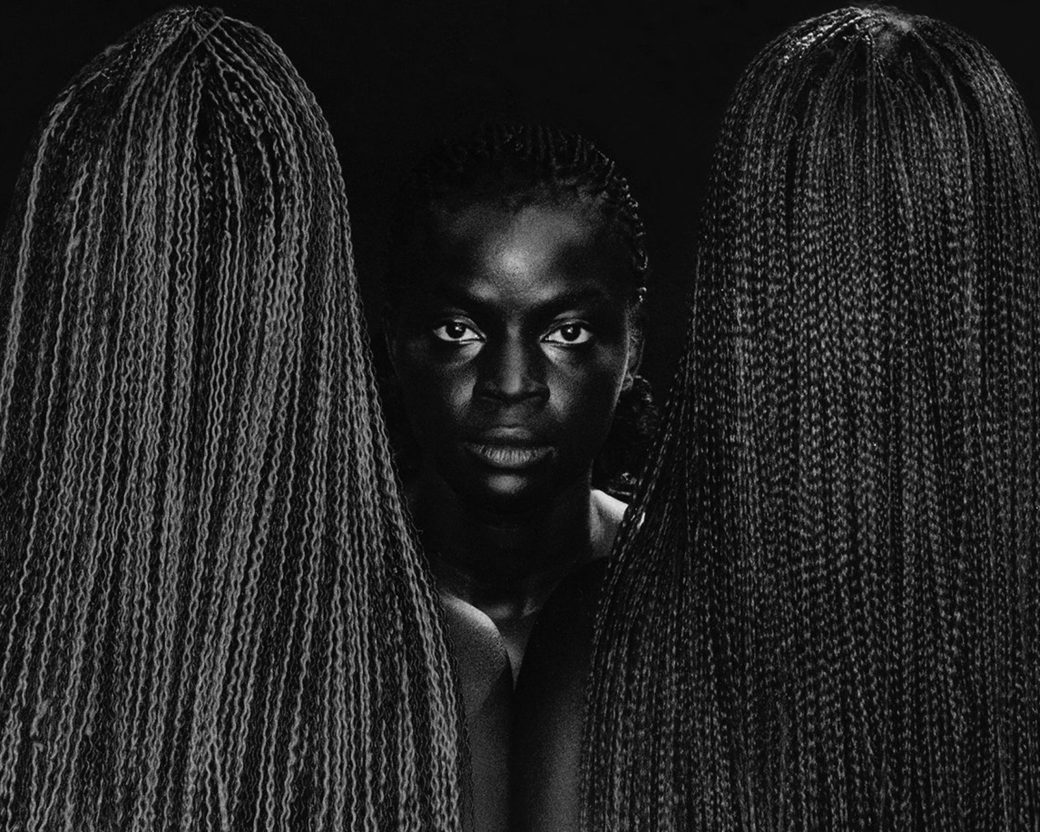Angèle Etoundi Essamba
Doyle Wham, London (28 September 2023 – 1 December 2023)
Review by Andy Bay
Angel Etoundi Essamba is a Cameroonian photographer who works and lives in Amsterdam. Her first solo exhibition in the UK, at the Doyle Wham gallery in London, featured a collection of limited edition prints and photographs, mainly produced using the silver gelatin technique – the key process used in modern analogue photography – in 2005. Since 2006, Etoundi Essamba has increasingly been working with digital photography and media but this superb, vintage collection has garnered great acclaim, with interest from collections such as the Museum of Modern Art in New York and the National Museum of Women in the Arts in Washington D.C.
Throughout her career, Etoundi Essamba has adopted a strong political stance to defend the rights of African women who are still often subjected to patriarchal, economic and cultural discrimination across most Sub-Saharan countries. For four decades, she has been a pioneering, vocal spokeswoman who has opened up new global channels of expression and participation for young African women and artists.
In each picture, Etoundi Essamba carefully delineates the dimensions and movements from which her subject emerges. Her visual representations honour the remarkable women who have intersected her life, each leaving her with vivid memories and singular emotions.
In ‘Noir 60’ (2001), a solemn, meditative young woman with a glowing complexion looms over the photograph, a beautiful shadow capturing an impression of continuity between motion and stillness. The camera angle in ‘5 Photos by Women’ seems to be suspended halfway across the photograph. A woman rests her chin on hands covered in fine grainy sand, the expression on her face concealed by the displacement of the light. At the centre of Etoundi Essamba’s work are the varying layers and textures of human skin and how they are connected by the most imperceptible threads to the rest of the world. The cosmetic rituals of body and facial scrubs in modern cultures are stripped down to their bare bones: dead skin is revived with the most basic of granular minerals and its ancient science can therefore endure and resist change.
With ‘Fruit du Labeur’, Etoundi Essamba modifies the respective positions of subject (an angelic, innocent looking teenage girl) and object (a fluffy white pillow) and stretches their spatial representations to the point where they become indiscernible. Both gain depth as the teenage girl gazes intently into the lens. She is half-submerged by the pillow, which opens up the interplay of her body with the external world.
Etoundi Essamba uses the camera as a channel for information about the body. Sometimes the picture is blurred by colouration and pixelation; at other times, it is punctuated with black and white pigmentation, conceived as energetic visual constructions. Etoundi Essamba’s photographs avoid falling into predictable patterns, and in the snapshots of her close-ups and body portraits, we see the human strength and pride she has been seeking all along.

